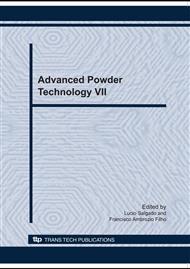p.76
p.82
p.88
p.94
p.100
p.106
p.112
p.118
p.124
Comparison of Porosity Measurement Techniques for Porous Titanium Scaffolds Evaluation
Abstract:
Porous titanium has been used for grafts and implant coatings as it allows the mechanical interlocking of the pores and bone. Evaluation of porous scaffolds for bone regeneration is essential for their manufacture. Porosity, pore size, pore shape and pore homogeneity are parameters that influence strongly the mechanical strength and biological functionality. In this study, porous titanium samples were manufactured by powder metallurgy by using pure titanium powders mixed with a pore former. The quantification of the porosity parameters was assessed in this work by geometric method and gamma-ray transmission, the non-destructive techniques and metallographic images processing, a destructive technique. Qualitative evaluation of pore morphology and surface topography were performed by scanning electron microscopy and optical microscopy. The results obtained and the effectiveness of the techniques used were compared in order to select those most suitable for characterization of porous titanium scaffolds.
Info:
Periodical:
Pages:
100-105
Citation:
Online since:
October 2010
Keywords:
Price:
Сopyright:
© 2010 Trans Tech Publications Ltd. All Rights Reserved
Share:
Citation:


